Stay in the know on all smart updates of your favorite topics.
Amsterdam Smart City Transition Day 2024: Recap
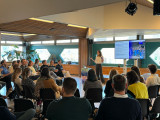
On Thursday, March 7th, Amsterdam Smart City partners gathered for a day full of inspiration, exchange and connection with each other at our Transition Day! In this article, we give you a quick overview of the challenges we discussed, the inspiration session and the crash course drawing. Interesting in learning more? Read the challenge descriptions by our Program Managers Noor and Pelle (linked below).
About our Transition Days
Our yearly Transition Day is the day on which we investigate together with the network where we can make the most impact this year. Last year on, we mainly looked at the underlying barriers to the (then) surprising challenges and results. These challenges, such as mobility justice and human digitalization, are now completed or handed over. That is why this Transition Day we started working on new challenges. We started working on transition tasks that can only be advanced by working together, where we as a network can make a difference. Together with our knowledge partners and the challenge submitters from our network, we put together the 2024 full day program.
The Underground Challenge
In this session, we dived into the world of underground infrastructure. Many different stakeholders deal with the underground. Electricity cables, fibre optic cables, gas pipelines, heat networks, sewers, but also tree roots and soil, form a complex playing field with many different interests for the parties involved. Right now, collaboration, data sharing, and co-planning between these parties is sub-optimal. Therefore, we started the challenge: Understanding the underground: Collaborating, Sharing Data, and Co-Planning. You can find all the information on the challenge here.
Would you like to join this challenge? Please get in touch with Noor at noor@amsterdamsmartcity.com.
The Cooperative Challenge
In the past decade, we have witnessed a surge of cooperatives across society. This is great because cooperative initiatives can help drive sustainability and social goals. However, these initiatives always remain small-scale and localized and, in most cases, accessible only to specific and select demographics. In this session, we discussed the barriers to making cooperatives more mainstream. We decided to focus on the energy domain and defined the following question: How can we help to mainstream energy cooperatives and ensure that structures in society make room for them and barriers are resolved?
You can find all the information on this challenge here. Would you like to join this challenge? Please get in touch with Noor at noor@amsterdamsmartcity.com.
The Floating Urban Development Challenge
Due to lack of space and climate change, the future of living might need to partly move on to water areas. Researchers and designers are therefore imagining and conceptualizing floating urban development. However, to make it a truly realistic and imaginable future scenario, there are more hurdles to overcome. This challenge aims to change our collective belief in a way that living on water becomes as a serious option conceivable for everyone. We’ll work on creating imaginable and workable scenarios of urban development on water.
You can find all the information on this challenge here. Would you like to join this challenge? Please get in touch with Pelle at pelle@amsterdamsmartcity.com.
The Circular challenge
Circular initiatives often struggle to progress beyond the pilot phase. Numerous barriers hinder these circular initiatives, such as lack of data, implementation across the entire production chain, regulatory obstacles, and higher costs.
To overcome these barriers, adjustments to regulations are necessary to better align with circular initiatives, alongside the establishment of shared ownership within the production chain. For this challenge, we decided to focus on Electric Vehicle Charging Infrastructure. You can find all the information on this challenge here.
Would you like to join this challenge? Please get in touch with Noor at noor@amsterdamsmartcity.com.
Inspiration session: Collaborating and building Coalitions – Renée Schoonbeek | Arcadis
Renée Schoonbeek (Arcadis) kicked off the afternoon program with an inspiring session about the dynamics of successful collaboration. She shared two area development projects, one a success and one a failure. The collaboration success was the story of Hudson Square, New York. They successfully managed to get more green into the city, better facilities for bicycles and pedestrians, and renovated a public park. The keys to success were a grassroots initiative, clear goals, and a diverse coalition representing everyone from real estate to residents.
In contrast, the collaboration for the development of Feyenoord's stadium failed due to leadership changes, shifting market conditions, and lack of long-term commitment. Important lessons that emerged from this failure were to continuously focus on collaboration, avoid false consensus, invest in long-term commitment, and be vigilant towards signals of dissent within the collaborating parties.
Renée finished the session with an exercise. The most important thing in collaboration is to properly listen and ask questions. We practised asking questions with the technique “2 down, 1 to the side”. Where you first ask three questions. The 1st question is a rational question (what, who, where, why)? The 2nd question is a follow-up question, again a rational question for clarification or deepening. The 3rd question is an emotional question (how does that feel, how do you look back on it, what have you learned from it?). This exercise helped us to see things from the other person's perspective.
Renée’s key takeaway for reaching consensus in collaborations was to not only look at what you need from another person but also to see what you can offer. With this information in our back pocket, we were ready to start forming our own coalitions.
Crash course drawing – Thomas van Daalen | Flatland agency
From lines to inspiring discussion diagrams. Flatland Agency introduced us to the world of 'Visual Storytelling'. How can you support a story with drawings, or visually represent a summary of a brainstorming session? Thomas from Flatland gave us a masterclass in drawing, demonstrating how simple shapes can say a lot.
We concluded this inspiring day with drinks and also said goodbye to Leonie as program director. With tears and laughter, we thanked her for all her efforts and dedication and wished her all the best for her further recovery.
We would like to give special thanks to everyone that helped organize this Transition Day. Many thanks to RoyalHaskoning, Flatland, Hieroo, Drift and HvA, all contributors to the challenges and all those present!
Our next event (knowledge- and Demoday) is on the 18th of April. Would you like to participate in this Demoday, or learn more about the program? Please reach out to pelle@amsterdamsmartcity.com.
Symposium Smart Education

Op vrijdag 7 juni 2024 organiseert het Smart Education Lab van de Hogeschool van Amsterdam een symposium dat in het teken staat van digitale middelen voor het onderwijs.
Vijf jaar geleden is binnen de Faculteit Onderwijs en Opvoeding, het Smart Education programma opgezet. Dit programma onderzoekt hoe AI en andere digitale technologieën het onderwijs kunnen verbeteren, door verschillende projecten en netwerkactiviteiten, zowel binnen het eigen onderwijs als samenwerkingen met partners.
Tijdens dit symposium delen we de onderzoekresultaten, verzorgen wij verschillende workshops en kun je kennismaken met de mensen die er aan werken.
Voor de keynote hebben we een intrigerende gastspreker in huis gehaald. Prof. dr. Frank van Harmelen is een internationaal toonaangevende wetenschapper op het gebied van AI. Met zijn jarenlange ervaring neemt hij ons mee in de brede wereld van deze technologie.
Excursie naar Sittard-Geleen en Heerlen – 20 en 21 juni

Op 20 en 21 juni reizen we af naar het zuiden om daar van Sittard-Geleen en Heerlen te leren. Ervaar in Heerlen en Sittard-Geleen hoe de slimme stad in de praktijk toegepast wordt en waar deze slimme toepassingen het fysieke en sociale domein verbindt.
In Sittard-Geleen zie je hoe zij in hun proeftuin Zeeheldenbuurt in gesprek gaan met de inwoner over activiteiten en bewegen. In Heerlen-Noord leren we van de stappen die worden gezet in een van de gebieden van het Nationaal Programma Leefbaarheid en Veiligheid op gebied van kansengelijkheid. En bij de Brightlands Smart Services Campus in Heerlen gaan we in gesprek over hoe onderzoek en organiseer je samen met diverse partijen digitalisering enerzijds op gebied van circulariteit, anderzijds in het kader van bestaanszekerheid en particpatie. De gebundelde kennis van data science en mensgerichte Artificial Intelligence (AI) leidt tot nieuwe slimme digitale ontwikkelingen en diensten, die de kwaliteit van leven verbeteren.
Conceptprogramma
Dag 1: Proeftuin Zeeheldenbuurt Sittard-Geleen
Met de proeftuin Zeeheldenbuurt speelt de gemeente Sittard-Geleen in op drie thema’s, (Smart City, Participatie en Klimaat adaptatie). Samen met buurtbewoners en vakspecialisten (extern en intern) zijn ze in één buurt aan de slag om een betere toekomstbestendige leefomgeving te creëren en ontmoeting te stimuleren.
De gemeente luistert aan de hand van ‘slimme’ toepassingen naar de inwoner, houdt 0-metingen en monitoren, werkt aan een Digital Twin meetnetwerk en bekijkt dit alles gezamenlijk door de glazen van VR-brillen.
Kortom: Hoe kun je in deze buurt samen een Klimaatbestendige betere leef en ontmoet- omgeving creëren? Welke lessen leren we hier? Wat vinden de buurtbewoners van deze aanpak?
Dag 2: Van de Brightlands Smart Services Campus naar Heerlen – Noord
We starten deze dag in de Brightlands Smart Services Campus met twee parallelle tracks na een gezamenlijke aftrap over hoe de Brightlands Smart Services werkt.
Circulaire track
CollaborAll/Monady laten aan de hand van de transformatie van het voormalige DSM-hoofdkantoor in Heerlen zien hoe hun Circulaire Build Hubs werken. De Circulaire Build Hub zorgt ervoor dat al die individuele partijen met elk hun eigen informatie, specialistische inzichten, data, specificaties etc. op een makkelijke en betrouwbare manier naar dezelfde fysieke en digitale werkelijkheid kijken én handelen. De Circulaire Build Hub voorkomt onduidelijkheid, missers, onnodig werk, uitlopende planningen en onnodige kosten, vermindert risico’s en zorgt ervoor dat alle informatie in samenhang beschikbaar is. Dit bevordert efficiëntie en draagt bij aan de overgang naar een circulaire economie door duurzaam materiaalgebruik.
Sociale track
De Brightlands Smart Services Campus huisvest het ELSA Lab armoede en schulden. Dit lab richt zich op het voorkomen van geldproblemen, de bestrijding van schulden en armoede én het verbeteren van de financiële gezondheid. Leer wat hier wordt gedaan op gebied van AI en wat nu al de opbrengsten zijn. Daarna horen we van het Atelier Sociaal Domein van HS Zuyd hoe zij ervaringskennis hoe een samenwerking met ervaringsdeskundigen, onderwijs en onderzoek zorgt voor een betere match tussen vraag en aanbod.
Heerlen- Noord
In de middag bezoeken we Heerlen-Noord, waarin het sociaal en fysiek domein weer samenkomen. We maken een wandeling door een stukje Heerlen-Noord en bezoeken de Sjpruutshop. Een plek waar ouders van pasgeborenen gratis spullen kunnen halen voor de baby en voor de gemeente een vindplaats van de mensen voor wie we aan de slag zijn. Vervolgens lopen we via een opgeknapte kerk (tot limburgs archief), door een tweetal wijken (horende tot de armste wijken van het land). We leren hoe verduurzaming, renovatie tegen de achtergrond van het willen behouden van uniek cultureel erfgoed, namelijk de mijnwerkerswoningen samenkomen.
_______________________________________________________________
Datum: 20 en 21 juni
<strong>Tijd:</strong> 10.00 – 17.00 uur
<strong>Locatie:</strong> Sittard-Geleen, Brightlands Smart Services Campus en Heerlen- Noord
Meld je hieronder aan:
Will the 15-minute city cause the US suburbs to disappear? 6/7

Urbanisation in the US is undergoing major changes. The image of a central city surrounded by sprawling suburbs therefore needs to be updated. The question is what place does the 15-minute city have in it? That is what this somewhat longer post is about
From the 1950s, residents of US cities began moving en masse to the suburbs. A detached house in the green came within reach for the middle and upper classes, and the car made it possible to commute daily to factories and offices. These were initially still located in and around the cities. The government stimulated this development by investing billions in the road network.
From the 1980s, offices also started to move away from the big cities. They moved to attractive locations, often near motorway junctions. Sometimes large shopping and entertainment centres also settled there, and flats were built on a small scale for supporting staff. Garreau called such cities 'edge cities'.
Investors built new suburbs called 'urban villages' in the vicinity of the new office locations, significantly reducing the distance to the offices. This did not reduce congestion on congested highways.
However, more and more younger workers had no desire to live in suburbs. The progressive board of Arlington, near Washington DC, took the decision in the 1980s to develop a total of seven walkable, inclusive, attractive and densely built-up cores in circles of up to 800 metres around metro stations. In each was a wide range of employment, flats, shops and other amenities . In the process, the Rosslyn-Balston Corridor emerged and experienced rapid growth. The population of the seven cores now stands at 71,000 out of a total of 136,000 jobs. 36% of all residents use the metro or bus for commuting, which is unprecedentedly high for the US. The Rosslyn-Balston Corridor is a model for many other medium-sized cities in the US, such as New Rochelle near new York.
Moreover, to meet the desire to live within walking distance of all daily amenities, there is a strong movement to also regenerate the suburbs themselves. This is done by building new centres in the suburbs and densifying part of the suburbs.
The new centres have a wide range of flats, shopping facilities, restaurants and entertainment centres. Dublin Bridge Park, 30 minutes from Columbus (Ohio) is one of many examples.
It is a walkable residential and commercial area and an easily accessible centre for residents from the surrounding suburbs. It is located on the site of a former mall.
Densification of the suburbs is necessary because of the high demand for (affordable) housing, but also to create sufficient support for the new centres.
Space is plentiful. In the suburbs, there are thousands of (semi-)detached houses that are too large for the mostly older couples who occupy them. An obvious solution is to split the houses, make them energy-positive and turn them into two or three starter homes. There are many examples how this can be done in a way that does not affect the identity of the suburbs (image).
New construction in suburbs
This kind of solution is difficult to realise because the municipal authorities concerned are bound by decades-old zoning plans, which prescribe in detail what can be built somewhere. Some of the residents fiercely oppose changing the laws. Especially in California, the NIMBYs (not in my backyard) and the YIMBYs (yes in my backyard) have a stranglehold on each other and housing construction is completely stalled.
But even without changing zoning laws, there are incremental changes. Here and there, for instance, garages, usually intended for two or three cars, are being converted into 'assessor flats' for grandma and grandpa or for children who cannot buy a house of their own. But garden houses are also being added and souterrains constructed. Along the path of gradualness, this adds thousands of housing units, without causing much fuss.
It is also worth noting that small, sometimes sleepy towns seem to be at the beginning of a period of boom. They are particularly popular with millennials. These towns are eminently 'walkable' , the houses are not expensive and there is a wide range of amenities. The distance to the city is long, but you can work well from home and that is increasingly the pattern. The pandemic and the homeworking it has initiated has greatly increased the popularity of this kind of residential location.
All in all, urbanisation in the US can be typified by the creation of giant metropolitan areas, across old municipal boundaries. These areas are a conglomeration of new cities, rivalling the old mostly shrinking and poverty-stricken cities in terms of amenities, and where much of employment is in offices and laboratories. In between are the suburbs, with a growing variety of housing. The aim is to create higher densities around railway stations. Besides the older suburbs, 'urban villages' have emerged in attractive locations. More and more suburbs are getting their own walkable centres, with a wide range of flats and facilities. Green space has been severely restricted by these developments.
According to Christopher Leinberger, professor of real estate and urban analysis at George Washington University, there is no doubt that in the US, walkable, attractive cores with a mixed population and a varied housing supply following the example of the Rosslyn-Ballston corridor are the future. In addition, walkable car-free neighbourhoods, with attractive housing and ample amenities are in high demand in the US. Some of the 'urban villages' are developing as such. The objection is that these are 'walkable islands', rising in an environment that is anything but walkable. So residents always have one or two cars in the car park for when they leave the neighbourhood, as good metro or train connections are scarce. Nor are these kinds of neighbourhoods paragons of a mixed population; rents tend to be well above the already unaffordable average.
The answer of the question in the header therefore is: locally and slowly
Vennster winnaar van Green Innovation Hub Contest 202

Groepsfoto van alle deelnemers en aanwezigen tijdens de Green Innovation Hub Contest 2024 in Almere.
Almere, 18 april 2024 – Scale-up Vennster uit Nijkerk is de winnaar van de Green Innovation Hub Contest 2024. In deze wedstrijd presenteerden negen start-ups en scale-ups hun innovatieve oplossing voor een duurzame en inclusieve leefomgeving. Met hun methode en intelligente participatie app Parta wist Vennster de jury te overtuigen om hun product samen met de inwoners van Almere in te zetten voor de Almeerse woonwijken Hortus en Pampus.
De sociale app stelt een gemeente in staat om een brede doelgroep te bereiken, dit gaf uiteindelijk de doorslag om met de winst er vandoor te gaan. Het product zal verder ontwikkeld worden in samenwerking met de gemeente Almere en andere organisaties die betrokken waren bij de contest. Ook wint de scale-up een reis naar de Smart City World Congress 2024 in Barcelona, de productie van een eigen bedrijfsfilm en krijgen zij begeleiding om het bedrijf verder te ontwikkelen.
Partner en eigenaar Lonneke Dikmans van Vennster nam de Golden Award in ontvangst: “Wij zijn heel blij dat we hebben gewonnen, omdat het een erkenning is van onze missie. Wij willen zoveel mogelijk mensen in Nederland met elkaar in contact te brengen met onze methode en app en daarmee maatschappelijke uitdagingen oplossen, zoals de energietransitie.”
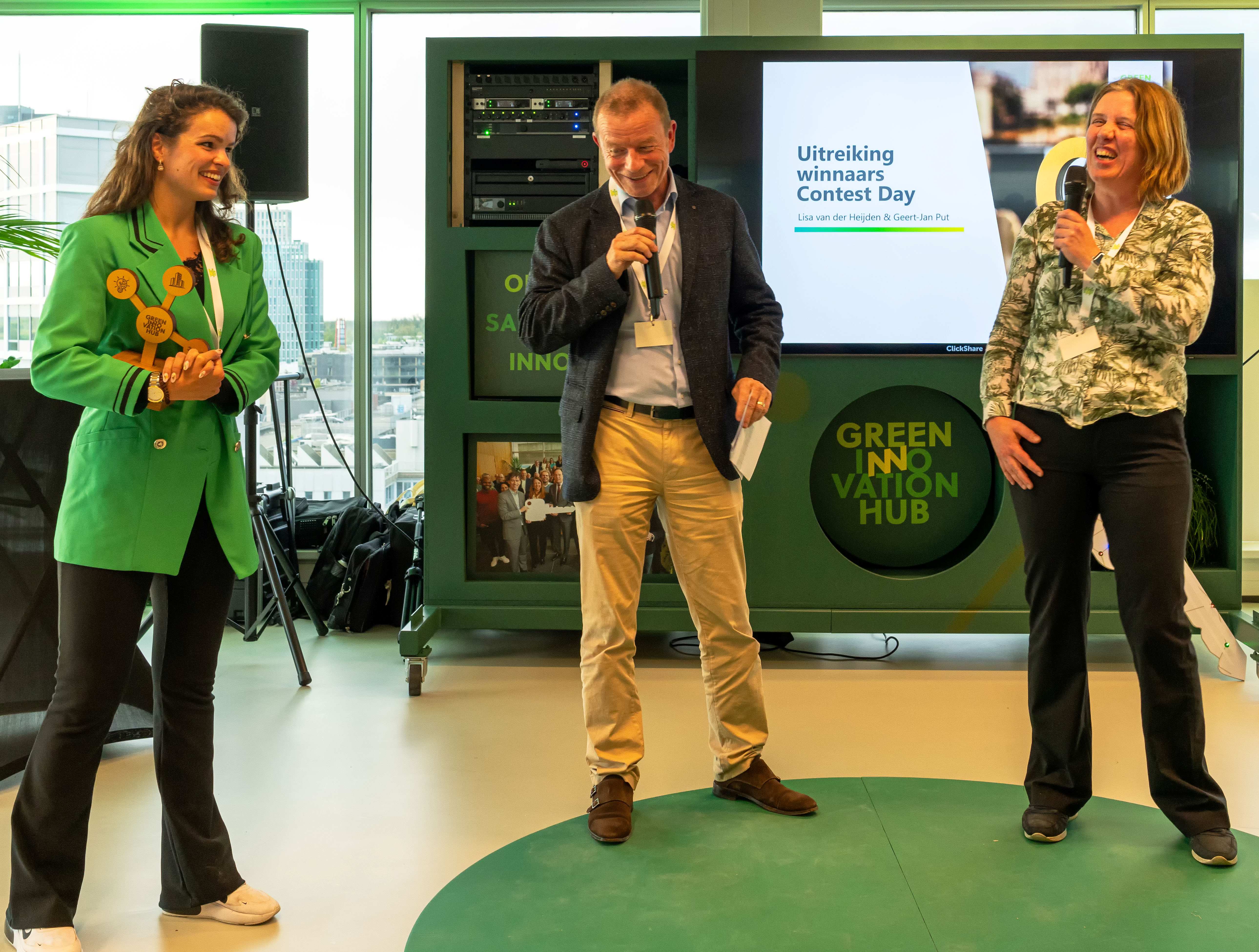
Vrnl: Lonneke Dikmans (eigenaar en partner bij Vennster) ontvangt de Golden Award van Lisa van der Heijden (adviseur community management FDS & Digilab bij Realisatie IBDS) en Geert-Jan Put (hoofd economische ontwikkelingen bij Gemeente Almere).
Jaarlijkse wedstrijd voor duurzame startups en scaleups
In april 2023 werd de eerste editie van de Green Innovation Hub Contest vanuit de Green Innovation Hub georganiseerd. Civity uit Amersfoort ging er toen met de hoofdprijs vandoor. Ook volgend jaar zal er weer een contest worden uitgeschreven. De Green Innovation Hub is een samenwerking tussen Gemeente Almere, Provincie Flevoland en VodafoneZiggo.
Nico Bettings, director Fixed Network (VodafoneZiggo) licht toe: “De manier waarop we werken, wonen, leven en communiceren met elkaar verandert in een hoog tempo. Nieuwe innovaties zijn daarbij essentieel. Ik vind Vennster hier een fantastisch voorbeeld van. Ik hoop dat deze prijs hen een duwtje in de goede richting geeft, met alle expertise die in de hub aanwezig is.”
Innovatiekracht in Almere
In heel Nederland, maar zeker in Almere, is de roep om duurzame en innovatieve leefoplossingen groot. De komende tien jaar zullen er één miljoen huizen worden gebouwd en nieuwe wijken ontstaan, inclusief de gehele infrastructuur. Het doel is deze gebieden zo duurzaam en toekomstbesteding mogelijk neer te zetten. Daaromis de Green Innovation Hub in 2023 neergestreken in Almere en richt de wedstrijd zich op innovaties die in deze nieuwe woongebieden toegepast kunnen worden.
Geert Jan Put, hoofd economische ontwikkelingen bij Gemeente Almere licht toe: “We zitten qua gebiedsontwikkeling in de grootste transitie van de afgelopen jaren. Almere groeit met meer dan twintig procent per jaar. Onze stad is daarmee de proeftuin van innovaties die bijdragen aan een toekomstbestendige en duurzame woonomgeving. De oplossingen die tijdens de Green Innovation Hub Contest zijn gepresenteerd, dragen ieder op hun eigen manier bij aan een duurzame en natuur inclusieve stad. Ik blijf de organisaties met interesse volgen.”

Vlnr: Danny Frietman (Green Innovation Hub), Harm Dijkstra (Provincie Flevoland), Nico Bettings (VodafoneZiggo), Caspar de Jonge (DMI-ecosysteem), René Visser (Green Innovation Hub/VodafoneZiggo) en Geert-Jan Put (Gemeente Almere) na ondertekening samenwerking Dutch Metropolitan Innovations en Green Innovation Hub (van links naar rechts).
Volgende fase Green Innovation Hub
De Green Innovation Hub is onlangs verhuisd naar gebouw Floor aan de Hospitaaldreef in Almere. De finale van de Green Innovation Hub Contest vond hier plaats. In het gebouw is tevens tijdens de avond het CityLab Almere geopend waar Vennster hun product kan presenteren aan geïnteresseerde bedrijven, overheids- en onderwijsinstellingen binnen en buiten Almere. Met het nieuwe kantoor is de grootte van de hub bijna vertienvoudigd. Per 1 juli komt daar zelfs 1000 m2 extra ruime bij. Daarmee kan het nieuwe gebouw worden opengesteld aan startups en scaleups die nog kantoorruimte zoeken. Geïnteresseerden kunnen zich via de website van de Green Innovation Hub kenbaar maken.
Over de Green Innovation Hub
De Green Innovation Hub is een broedplaats voor ontmoeting, samenwerking en innovatie. Partijen ontwikkelen digitale oplossingen voor een gezondestadsomgeving, lokale voedselzekerheid, mobiliteit, circulair bouwen, energiedistributie en sociale verbondenheid tussen stadsbewoners. Gezamenlijke innovaties worden gevalideerd en opgeschaald op speciale ‘greenfield’ locaties. De Green Innovation Hub is een open ecosysteem van het bedrijfsleven, overheden en onderwijs.
Join AMS Institute's Scientific Conference, hosted by TU Delft, Wageningen University & Research, MIT and the City of Amsterdam.

Do you want to learn from and network with the best researchers and scientists working to tackle pressing urban challenges?
AMS Institute, is organizing the AMS Scientific Conference from April 23-25 at the Marineterrein, Amsterdam, to address pressing urban challenges. The event is organized in collaboration with the City of Amsterdam.
The conference brings together leading institutions in urban research and innovation, thought leaders, municipalities, researchers, and practitioners to explore innovative solutions for sustainable development in Amsterdam and other global cities.
Keynotes, research workshops, learning tracks, and special sessions will explore the latest papers in the fields of mobility, circularity, energy transition, climate adaptation, urban food systems, digitization, diversity, inclusion, living labs experimentation, and transdisciplinary research.
Attendees can expect to gain valuable insights into cutting-edge research and engage in meaningful discussions with leading experts in their field. You can see the full program and all available sessions here.
This year's theme is 'Blueprints for messy cities? Navigating the interplay of order and messiness'.
The program
Day 1: The good, the bad, and the ugly
Keynotes by Paul Behrens of Leiden University and Elin Andersdotter Fabre of UN-Habitat will be followed by a city panel including climate activist <strong>Hannah Prins</strong>. The first day concludes with a dinner at the Koepelkerk in Amsterdam: you're welcome to join our three-course meal with a 50 euro ticket.
Day 2️: Amazing discoveries
Keynotes by Carlo Ratti of MIT and Sacha Stolp of the Municipality of Amsterdam discuss innovation and research in cities. <strong>Corinne Vigreux</strong>, co-founder of TomTom, and Erik Versnel from Rabobank will participate in the city panel.
Day 3️: We are the city
Keynotes by Paul Chatterton of Leeds University and Victor Neequaye Kotey Deputy Director of the Waste Management Department of the Accra Metropolitan Assembly, Ghana. They discuss how we shape the future of our cities together. This will be followed by a city panel including Ria Braaf-Fränkel of WomenMakeTheCity and prof. dr. Aleid Brouwer of the Rijksuniversiteit Groningen.
To buy tickets: You can secure your conference tickets through our website.
Dinner tickets: On April 23 we’re hosting a dinner at the Koepelkerk in Amsterdam. Tickets for this can be added to your conference pass or bought separately.
😀Resultaten - Is betrokkenheid van de gemeenschap de moeite waard? 😀

We hebben uiteenlopende en interessante reacties ontvangen van stedenbouwkundigen, architecten en gemeenten. Als u wilt weten wat andere professionals denken, vul dan deze enquête in met uw e-mailadres en wij delen de inzichten met u.
Bedankt! 😀
Follow Playground on LinkedIn
We've received varied and interesting responses from urban developers, architects, and municipalities. If you want to know what other professionals think, please fill out this survey with your email, and we will share the insights with you.
Thank you! 😀
The global distribution of the 15-minute city idea 5/7
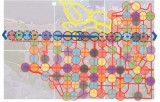
A previous post made it clear that a 15-minute city ideally consists of a 5-minute walking zone, a 15-minute walking zone, also a 5-minute cycling zone and a the 15-minute cycling zone. These three types of neighbourhoods and districts should be developed in conjunction, with employment accessibility also playing an important role.
In the plans for 15-minute cities in many places around the world, these types of zones intertwine, and often it is not even clear which type of zone is meant. In Paris too, I miss clear choices in this regard.
The city of Melbourne aims to give a local lifestyle a dominant place among all residents. Therefore, everyone should live within at most 10 minutes' walking distance to and from all daily amenities. For this reason, it is referred to as a 20-minute city, whereas in most examples of a 15-minute city, such as Paris, it is only about <strong>the round trip</strong>. The policy in Melbourne has received strong support from the health sector, which highlights the negative effects of traffic and air pollution.
In Vancouver, there is talk of a 5-minute city. The idea is for neighbourhoods to become more distinct parts of the city. Each neighbourhood should have several locally owned shops as well as public facilities such as parks, schools, community centres, childcare and libraries. High on the agenda is the push for greater diversity of residents and housing types. Especially in inner-city neighbourhoods, this is accompanied by high densities and high-rise buildings. Confronting this idea with reality yields a pattern of about 120 such geographical units (see map above).
Many other cities picked up the idea of the 15-minute city. Among them: Barcelona, London, Milan, Ottawa, Detroit and Portland. The organisation of world cities C40 (now consisting of 96 cities) elevated the idea to the main policy goal in the post-Covid period.
All these cities advocate a reversal of mainstream urbanisation policies. In recent decades, many billions have been invested in building roads with the aim of improving accessibility. This means increasing the distance you can travel in a given time. As a result, facilities were scaled up and concentrated in increasingly distant places. This in turn led to increased congestion that negated improvements in accessibility. The response was further expansion of the road network. This phenomenon is known as the 'mobility trap' or the Marchetti constant.
Instead of increasing accessibility, the 15-minute city aims to expand the number of urban functions you can access within a certain amount of time. This includes employment opportunities. The possibility of working from home has reduced the relevance of the distance between home and workplace. In contrast, the importance of a pleasant living environment has increased. A modified version of the 15-minute city, the 'walkable city' then throws high hopes. That, among other things, is the subject of my next post.
Supporting Sustainable Technology Education Through E-Waste Recycling
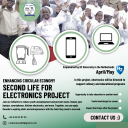
🌍✨ Join Us in Making a Difference! ✨🌍
We're excited to launch a groundbreaking project aimed at transforming e-waste into educational opportunities! 🚀📚 As part of our commitment to sustainability and digital literacy, we're collecting smartphones, laptops, and other electronics to support vibrant educational workshops in Rwanda.
Why join us? By participating, you'll:
- 🌱 Support environmental sustainability by helping reduce e-waste.
- 📖 Contribute to enhancing digital literacy among underserved communities.
- 🤝 Be part of a global movement advocating for responsible technology use.
- 🎓 Help provide essential skills that can transform lives and foster long-term growth.
We're looking for individuals and organizations to donate devices, share expertise, or sponsor our efforts. Every contribution makes a real difference, and together, we can create a more sustainable and inclusive future. 🌟
Let's reshape the future, one device at a time. Join us in this exciting journey and be credited in our upcoming documentary that highlights the collective efforts of our incredible partners from Germany, Latvia, and the Netherlands. 🎥🌍
CONTACT US THROUGH EMAIL - madaralace1999@gmail.com
OPEN CALL Placemaking Week Europe 2024

Get ready for an exciting experience at the 7th Annual Placemaking Week Europe (PWE) in Rotterdam, Netherlands, from September 24-27, 2024! 🚀
Join us as we co-create an unforgettable programme! Do you have a game-changing project, research, or workshop to share? We want to hear from you!
This year’s festival revolves around four compelling themes:
1. Creating Place & Making It Last
2. Climate Adaptation: Together Towards Change
3. Living with Water: The Flow of the City
4. Local Power & The Battle for Space
Submit your proposals by May 19, 2024, and shape the future of urban spaces with us! Don’t miss out on this opportunity to make a difference! Join us in Rotterdam and let’s build better cities, one idea at a time! ✨
You can find all the open call info and application instructions here.
More information about PWE'24 on our official website.
Highlights from the Intelligent Cities Challenge Implementation Lab

From March 4 to April 5, Amsterdam Smart City (ASC) collaborated with international peers from 77 cities across Europe in a series of online knowledge and inspiration sessions during the Intelligent Cities Challenge (ICC) Implementation Lab. The focus was on sharing best practices and building knowledge for implementing Local Green Deals (LGDs) to accelerate the transformation towards sustainability based on the principles of good governance, policy integration, partnership with local stakeholders.
Colleagues, partners, and experts from the Amsterdam Smart City network shared insights in several thematic and training sessions, including:
• Mobility & Transport Thematic Session: Pelle Menke shared the approach and lessons from ASC's Mobility Justice Challenge, while Diederik Basta introduced the City of Amsterdam's participation in the Gemini project, supporting residents in starting local, shared mobility cooperatives through a "Mobility as a Commons" (MaaC) approach.
• Local Green Deals Training Session: Egon van Wees presented Amsterdam's experience in setting up nine Impact Deals with social enterprises under the CLIMAA Local Green Deals project. The evaluation indicates that these deals have resulted in the creation of 105 jobs for people with barriers to the labor market and a reduction of 92 tonnes of CO2 emissions. Amsterdam, in collaboration with Aalborg (Denmark), also developed a framework now utilized by other cities in setting up similar Impact Deals.
• Social Economy Thematic Session: Frits Verhoef shared lessons from his involvement in two local energy cooperatives, including the pioneering work of NDSM-Energie in developing a 15MW wind park in the NoorderIJplas area, highlighting various financial and political barriers yet to be overcome. Frits also his work with MeerEnergie, a cooperative aiming to establish a heating network owned by local residents in the Watergraafsmeer district of Amsterdam, utilizing waste heat from nearby data centers.
What's Next?
Amsterdam Smart City is excited to host the ICC network in Amsterdam for a Mobility Field Visit in May, showcasing best practices for public-private collaboration in sustainable and smart mobility. We also look forward to connecting with ICC peers in person during the upcoming ICC conference in Porto in June.
More Information
For further details about the Implementation Lab and upcoming ICC activities, visit the ICC website: https://www.intelligentcitieschallenge.eu/events/icc-implementation-lab-1
Stakeholders in the Amsterdam Region interested in more information or wishing to connect to the ICC network during upcoming labs or other similar sessions can reach out to ASC International Liaison via cornelia@amsterdamsmartcity.com
No Failure No Glory

Flevo Campus, Food Innovators and UPALMERE! are organizing this No Failure, No Glory evening.
Entrepreneurship is having courage, seizing opportunities, and above all, sticking your neck out. Mostly with success and at the same time, running the risk of making wrong decisions due to all the challenges.
Often the focus is on the successes, and we like to share those, but there is much to be learned from mistakes others have already made. That's why Flevo Campus and UPALMERE! are organizing this No Failure, No Glory evening. Let yourself be nourished and inspired by candid entrepreneurial stories.
Program:
Networking with Drinks and Bites: From 17:00 to 17:30, you can network in a relaxed atmosphere and enjoy delicious snacks and drinks.
From 17:30-18:00 we start the No Failure, No Glory stories: Led by Janno Lanjouw, journalist at Flevo Campus, various entrepreneurs will share their most instructive moments of failure in sessions of 15 minutes each. Expect vulnerable, yet humorous stories about companies that struggled in the start-up phase, reacted too late to market changes, or were ahead of their time. What went wrong? And what did they learn from it and how did it make them more successful?
Q&A: After each story, you have the opportunity to ask your questions. Dive deeper into the experiences of these entrepreneurs and learn from their insights.
Wrap Up and Drinks: At 19:00, we will conclude the evening with drinks, giving you the opportunity to continue conversations, exchange ideas, and make new connections.
Sign up via link and join this event!
⚡️Powering the Future - Discussions on sustainable solutions for our digital dependency

Powering the future
Sustainable solutions for our digital dependency
Cloud computing does not take place in the sky. Gigantic data centers are popping up all around us, home to new AI services and Bitcoin mining operations that consume more energy than the entire country of the Netherlands annually. Code using Python & Java (the most popular) can use up to 45x times as much energy as other programming languages. Whether you are a programmer or user, our dependence on all this processing power is creating a new energy competition between our homes / businesses and our digital lives. What are some examples for sustainable development? Join us April 18th where we talk to industry pioneers that are developing serious solutions to solve our addiction to energy.
AGENDA:
17:00 Welcome drinks - Welcome drinks to break the ice and network a bit with fellow attendees.
17:30 Opening and Welcome - Pinch / Appsterdam
17:35 Kick-off Speaker - Tom Moran - Technology and Sustainability Strategy Consultant. Tom has been working in sustainability for over 30 years and technology for over 20 years. Tom is going to talk about why “the cloud” is not more sustainable, carbon footprints don’t matter, net zero targets are meaningless and why you should be skeptical of the AI hype machine.
Tom will also talk about what IT people who care about the environmental impact of their work need to understand and do to make a difference.
18:15 Food is served
19:00 Luisa García Montoya - Product Manager DX at AMS-IX. Luisa is passionate about leveraging technology to drive meaningful change. Drawing from her experience interacting with a diverse array of ISPs, telecoms, cloud providers, content delivery networks, and other participants involved in the digital ecosystem, Luisa will delve into the urgency for more sustainable code. The rise of ChatGPT/AI has created significant challenges for energy consumption. Recent laws and regulations are beginning to enforce standards to counteract these challenges. What aspects will programming practices need to account for? In her talk, Luisa discusses these challenges and opportunities, sharing some hard realities and examples, such as how mutualized infrastructures and data sharing can help save energy and money while also encouraging creativity in programming.
20:00 Closing and networking drinks.
C the Future
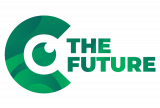
Wij de 3D Makers Zone, Bouwlab R&Do, MAAK Haarlem en Gemeente Haarlem zijn de initiatiefnemers van het C-district in Haarlem en nodigen je uit om samen met ons te bouwen aan een innovatieve, digitale en circulaire regio. Het C-district is volop in ontwikkeling. Om deze ontwikkeling vorm te geven, richten we ons op een concreet evenement waarin we al in 2024 samen kunnen werken: C The Future.
En dat doen we graag samen met jou. C The Future is hét tweedaagse evenement waar technologie, digitalisering, circulariteit, leren en innovatie samenkomen.
Hier kunnen bedrijven, onderwijsinstellingen en bewoners uit de regio kennismaken met de nieuwste toepassingen en producten. Je kunt in contact komen met de nieuwste technologieën en deelnemen aan het Skills-ontwikkelingsprogramma van de Smart Makers Academie, waar nieuwe makers, techneuten en pioniers worden opgeleid. Ontdek welke ontwikkelingen, mogelijkheden en innovaties relevant zijn voor de directe omgeving, de stad en de regio. Samen dragen we bij aan de ontwikkeling van kennis en werkgelegenheid, en een duurzame economie door bedrijven te betrekken bij de regionale uitdagingen en hun eigen bestaansrecht.
We richten dit evenement in op basis van de vijf landelijke transitieagenda’s voor een circulaire economie:
- Bouw
- Biomassa en voedsel
- Maakindustrie
- Kunststoffen
- Consumptiegoederen
Innovatie, vaardigheden en digitalisering vormen de rode draad.
Vrijdag 4 oktober is gericht op de bedrijven (klein, midden- en grootbedrijf), overheden en kennisinstellingen.
Zaterdag 5 oktober is bedoeld voor inwoners uit de regio die de rol van leerling, werknemer en consument vervullen.
Schrijf je nu in via onze website en neem deel!
Art-Up Seminar

Kom naar het Art-up Seminar #inalab op woensdag 24 april en verken samen met ons de kracht van bottom-up innovatie in de cultuursector.
Dit wordt een middag vol inspiratie, ontmoetingen en gesprekken; voor ondernemers, instellingen, fondsen en beleidsmakers in de culturele en creatieve sector die meer willen weten over bottom-up innovatie en hoe dit gestimuleerd kan worden.
🗓️ Woensdag 24 april 2024
🕐 13:00 - 17:00
📍 A Lab Amsterdam, Overhoeksplein 2
Mobiliteit als schaars goed - Denk mee: Hoe regelen we het recht om te reizen?
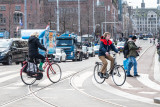
Mobiliteit staat voor vrijheid, maar zorgt ook voor ongelijke lasten. Tijdens deze sessie onderzoeken we samen in een interactieve simulatie een systeem dat met 'mobiliteitskrediet' werkt. Wat zijn de effecten voor de samenleving? Biedt het kansen voor een eerlijkere verdeling om maakt het de ongelijkheid alleen maar groter?
Deze avond is onderdeel van een studie van de TU Delft, in samenwerking met AMS Institute en gemeente Amsterdam. Let op: Om deel te nemen aan deze avond in Pakhuis de Zwijger, heb je een werkende smartphone nodig.
NB. Deelname aan de sessie wordt beloond met een VVV-bon ter waarde van 10-euro.
Aanmelden kan via de website van Pakhuis de Zwijger https://dezwijger.nl/programma/mobiliteit-als-schaars-goed
Wanneer: Dinsdag 23 april
Hoe laat: 19:30-21:30
Waar: Pakhuis de Zwijger, IJzaal (Piet Heinkade 179, 1019 HC Amsterdam)
The '15-minute principle' also applies to rural areas (4/7)

Due to a long stay in the hospital, I was unable to post my columns. I also cannot guarantee their continuity in the near future, but I will do my best...
In my previous post, I emphasised that urban densification should be coordinated with other claims on space. These are: expanding blue-green infrastructure and the desire to combine living and working. I am also thinking of urban horticulture. It is therefore unlikely that all the necessary housing in the Netherlands - mentioned is a number of one million housing units - can be realised in the existing built-up area. Expansion into rural areas is then inevitable and makes it possible to improve the quality of these rural areas. Densification of the many villages and small towns in our country enable to approach them from the '15-minute principle' as well. Villages should thereby become large enough to support at least a small supermarket, primary school and health centre, but also to accommodate small businesses. A fast and frequent public transport-connection to a city, to other villages and to a railway station in the vicinity is important.
A thorny issue is the quality of nature in the rural area. Unfortunately, it is in bad shape. A considerable part of the rural area consists of grass plots with large-scale agro-industrial use and arable land on which cattle feed is grown. Half of the Netherlands is for cows, which, incidentally, are mostly in stalls. Restoring nature in the area that is predominantly characterised by large-scale livestock farming, is an essential task for the coming decades.
The development of sufficiently dense built-up areas both in cities and villages and the development of new nature around and within those cities and villages is a beckoning prospect. This can be done by applying the idea of 'scheggen' in and around medium-sized and large cities. These are green zones that penetrate deep into the urban area. New residential and work locations can then join the already built-up area, preferably along existing railway lines and (fast) bus connections. These neighbourhoods can be built in their entirety with movement on foot and by bicycle as a starting point. The centre is a small densely built-up central part, where the desired amenities can be found.
In terms of nature development, depending on the possibilities of the soil, I am thinking of the development of forest and heath areas and lush grasslands, combined with extensive livestock farming, small-scale cultivation of agricultural and horticultural products for the benefit of nearby city, water features with a sponge function with partly recreational use, and a network of footpaths and cycle paths. Picture above: nature development and stream restoration (Photo: Bob Luijks)
Below you can link to my free downloadable e-book: 25 Building blocks to create better streets, neighborhoods and cities
Programma voor Kennis- en Demodag #23
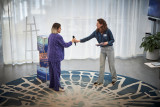
Op donderdag 18 april zijn we met het netwerk te gast bij Ru Paré, een voormalig basisschoolgebouw in Slotervaart. Ru Paré is een community die bewoners en tientallen organisaties en initiatieven een plek geeft om samen te komen.
De Amsterdam Smart City Demodagen zijn regelmatig terugkerende middagen bedoeld om de voortgang van de verschillende innovatieprojecten aan elkaar te presenteren, hulpvragen op tafel te leggen, dilemma’s te delen en meer partners te betrekken bij een project en deze vraagstukken verder te brengen.
Verder hebben we weer onze gebruikelijke werksessies waarin we een aantal vragen met een kleine groep grondiger behandelen. De Demodag wordt voorafgegaan door een Kennissessie waarvoor deelname optioneel is. We sluiten af met een hapje en drankje. De middagen kenmerken zich door een zeer open en vrolijke sfeer.
Kennissessie
Voorafgaand aan de Demodag, organiseren we een kennissessie over een transitie-overstijgend onderwerp. Dit keer neemt Ruben Polderman (Gemeente Amsterdam) jullie mee in een introductie van Socratic Design: Een vernieuwende aanpak voor maatschappelijke uitdagingen en het herzien van ons denken. We accepteren vaak aannames over mens en wereld zonder ze te bevragen, maar deze vormen wel ons narratief en beïnvloeden onze leefomgeving en levenswijze. De Gemeente Amsterdam daagt ons uit om nieuwe, duurzame narratieven te verkennen en ons denken te analyseren. Doe je mee aan deze verkenning?
Werksessies
Energie | Co-creatie met bewoners in de warmtetransitie | Dave van Loon & Marieke van Doorninck (Kennisland) / Marije Poel (HvA)
Gemeenten en wijken zijn volop aan de slag met de warmtetransitie. De wijkuitvoeringsplannen worden ontwikkeld en aan bewoners gepresenteerd. Helaas wordt de bewoner behoorlijk laat in de planning betrokken, wat vaak tot veel ontevredenheid leidt. Deze top-down manier van werken lijkt niet ideaal te zijn om bewoners bij de warmtetransitie te betrekken. Daarom is Kennisland bezig met het ontwikkelen van een plan voor het vroegtijdig samenwerken met bewoners bij de warmtetransitie van wijken, waarbij vooral ook wordt gezocht naar aansluiting bij wat leeft in de buurt. Dit plan is al eerder besproken met diverse betrokken (bewoners)organisaties en de Hogeschool van Amsterdam. In deze werksessie willen we het idee toetsen en weer een stap verder brengen. We gaan input ophalen over het plan, onderzoeken welke mogelijkheden er zijn voor plekken om dit plan uit te voeren en financiering, en we gaan op zoek naar partners om hier concreet mee aan de slag te gaan.
Mobiliteit | Mobiliteitsrechtvaardigheid: samen definiëren, doemdenken en aanpakken | Afstudeerkring Mobiliteitsrechtvaardigheid HvA
In opdracht van de Provincie Noord-Holland en Amsterdam Smart City zijn Jackie Ippel, Timo van Elst, Merel Thuis en Jade Salomons aan de slag gegaan met een afstudeeropdracht rond het thema Mobiliteitsrechtvaardigheid. Binnen deze multidisciplinaire afstudeerkring voeren de studenten onderzoek uit op verschillende onderwerpen. Ze zijn nu halverwege hun onderzoek over ouderen in Purmerend, ervaringen van mobiliteitsarmoede, en de kloof tussen beleidsmakers en doelgroepen. Tijdens deze sessie willen ze samen met de deelnemers op zoek naar definities voor (mobiliteits)rechtvaardigheid en met behulp van doemdenken, omdenken en andere creatieve werkvormen oplossingen formuleren.
Digitaal | Data Commons: De Green Mile case | Lia Hsu (Amsterdam Economic Board)
Omschrijving volgt!
Pitches
True price lab HvA - Sjoukje Goldman Ph.D. (HvA)
Om bedrijven te ondersteunen die overwegen true pricing te implementeren doet het Centre for Market Insights (CMI) van de Hogeschool van Amsterdam onderzoek naar de communicatie over true pricing naar de consument. Van februari tot en met juni loopt er een pilot op onze economische campus, waarbij een deel van het assortiment in het bedrijfsrestaurant en de koffie’s in de espressobar voorzien van de true price (echte prijs). Met deze pilot doen we onderzoek in een real-life setting naar de bereidheid van de consument op de echte prijs vrijwillig te betalen.
Het belang en de waarde van ‘Hier-opgewekte en Hier-geconsumeerde’ elektriciteit als netcongestie en verduurzaming maatregelen. - Hugo Niesing (Resourcefully)
Deze pitch toont broodnodige innovatie over het elektriciteitssysteem van de toekomst. We sturen in de fysieke ruimte (gebied onder het Trafohuisje) en tijd (simultaan opwek/afname per kwartier).
FlexPower stuurt de publieke laadpalen aan, FlexCity de laadinfrastructuur bij mensen thuis. Wat zijn de overeenkomsten en verschillen, hoe kunnen deze twee initiatieven elkaar optimaal versterken? ‘Zelfconsumptie’ achter je eigen aansluiting en onder het trafohuisje, hiermee verbeteren we:
- De levensduur van het transformatorhuisje;
- CO2 uitstoot van de buurt;
- Onze energie onafhankelijkheid;
- De werkelijke kosten van elektriciteit en netwerkgebruik.
OUI - De eerste circulaire auto – Barend Koolhaas
De OUI is het eerste circulaire elektrische voertuig op vier wielen. Het concept combineert een maximum aan praktische doeleinden met een minimum aan impact op het milieu. Het stelt de vraag: wat hebben we echt nodig? Weinig dingen zijn zo destructief als de auto. Vervuiling, verkeersdoden, enorme verspilling van energie en natuurlijke hulpbronnen en landschappen en gemeenschappen die worden verscheurd door infrastructuur. Als we onze manier van leven opnieuw willen vormgeven, moeten we de auto herontwerpen. We moeten wandelen en fietsen prioriteit geven, maar voor sommige doeleinden hebben we iets groters nodig. Het hoeft niet snel te gaan en het kan heel licht zijn. De OUI is ontworpen om gedeeld, gerepareerd en hergebruikt te worden. Het is een soort Fairphone op wielen die overal ter wereld kan worden gebruikt. Vooral op plekken waar schonere, veiligere mobiliteit een noodzaak is.
We hebben nog ruimte voor enkele pitches. Heb je een innovatieve oplossing voor één van onze transitievraagstukken? Of heb je een hulpvraag die je aan het netwerk wilt stellen? Neem dan contact met ons op!
Klinkt het programma interessant? Je bent welkom om aan te sluiten. Laat het ons weten en stuur een korte motivatie naar pelle@amsterdamsmartcity.com of noor@amsterdamsmartcity.com. De Kennis- en Demodag is van 12:45-16:30 met een borrel na afloop
😀Is betrokkenheid van de gemeenschap de moeite waard? Enquête van 1 minuut😀

Hallo allemaal, Fijne Donderdag, 😀 (English below)
Wij willen graag begrijpen en leren oof participatie in de gebouwde omgeving de moeite waard is en welke uitdagingen je daarbij bent tegengekomen.
Vul deze enquête van 30 seconden (max. 1 minuut) in en kijk wat andere professionals ervaren.
Thank you,
Playground Team
www.plgrnd.city
----------------
Hello all, Happy Thursday, 😀
We would like to understand and learn if participation in the built environment is worth it and what challenges you have experienced with it.
Please complete this 30-second (max 1 minute) survey and see what other professionals experience.
Cheers,
Playground Team
When Business Meets The Amsterdam Donut
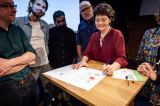
Op 11 april 2024, van 13.30 tot 17.30 uur, nodigen wij jullie uit voor een inspirerende workshop in het hart van Amsterdam! Samen met de Amsterdam Donut Coalitie en Erinch Sahan (Business and Enterprise Lead bij het Doughnut Economics Action Lab) zullen we dieper ingaan op hoe bedrijven kunnen bijdragen aan een duurzamere en rechtvaardigere economie.
In deze workshop zullen we bespreken hoe bedrijven kunnen helpen Amsterdam 'binnen de donut' te brengen, waarbij de behoeften van alle mensen worden vervuld binnen de grenzen van onze planeet. Je zult radicale ideeën ontdekken om jouw organisatie te transformeren en effectieve tools krijgen om deze ideeën in de praktijk te brengen.
De workshop biedt niet alleen waardevolle inzichten en praktische instrumenten, maar ook een kans om deel uit te maken van een netwerk van gelijkgestemde zakelijke pioniers die zich inzetten voor positieve verandering.
Gedurende het evenement zullen deelnemers de kans krijgen om:
- Inzicht te krijgen in de huidige stand van zaken van Donut Economics in Amsterdam, inclusief lopend onderzoek, strategieën en beleid.
- Innovatieve tools en methodologieën te verkennen die zijn ontwikkeld door het Doughnut Economics Action Lab om bedrijven te begeleiden bij het herontwerpen van hun bedrijfsvoering.
- In contact te komen met lokale pioniers en na te denken over hun rol binnen het bredere Amsterdamse ecosysteem.
Door deel te nemen, zullen deelnemers niet alleen waardevolle kennis en praktische vaardigheden opdoen, maar ook deel uitmaken van een netwerk van toegewijde individuen die zich inzetten voor positieve verandering in de zakenwereld.
Dit evenement is ideaal voor professionals uit bedrijven van alle groottes die enthousiast zijn om hun organisaties te transformeren en bij te dragen aan de opbouw van een veerkrachtige en inclusieve economie.
Stay up to date
Get notified about new updates, opportunities or events that match your interests.

